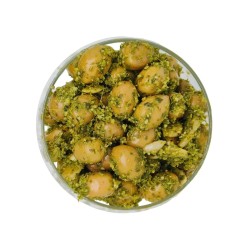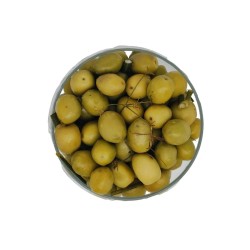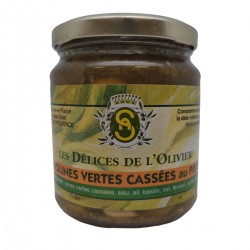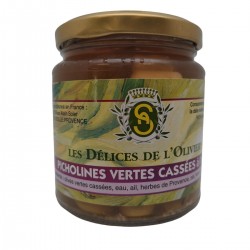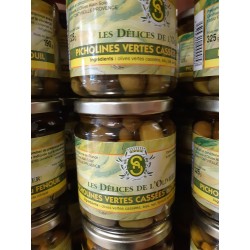
Tradition of Broken Olives in Provence
Broken Olive Tradition in Provence: An Authentic Craftsmanship
The tradition of broken olives in Provence marks the transition between summer and autumn, capturing an authentic craftsmanship passed down from generation to generation.
Discover the secrets of late harvesting, delicate fruit notching, and the significance of this eagerly anticipated practice among enthusiasts of this specialty.
Harvesting and Olive Varieties
The tradition of broken olives begins with a slightly later harvest than that of green olives. The fruits are notched using a mallet, ensuring that each olive is slightly split without being crushed.
The famous "broken green olives from the Vallée des Baux-de-Provence" come from the Salonenque or Aglandau varieties, giving this tradition a unique and distinctive flavor.
Preparation of Broken Green Olives
The preparation of broken green olives requires meticulous attention.
Use a wooden mallet to lightly crack the olives; the goal is to split the olives without crushing them, thus preserving their integrity.
Then place them in a container, covering them with cold water to prevent oxidation and ensure they retain their characteristic green color.
Leave the olives in the water for 9 to 12 days, renewing daily until they lose all bitterness.
Preparation of Broken Olives: Brine or "Infusion"
Once broken, green olives are hand-picked and enter the crucial phase of preparing the brine or "infusion."
To prepare the infusion:
- Boil clean water.
- Add coarse salt, pepper, a piece of orange peel, bay leaves, and fennel to the boiling water.
- Boil for 10 minutes, then let it cool completely.
Drain the broken olives and, once the brine is cold, pour it into the jar with the olives. You can start enjoying these delights 5 or 6 days later. Make sure to fully immerse your olives for optimal preservation.
Use slightly weighted lids to keep the olives submerged in the containers, and fill the infusion jars to the maximum during preservation. These olives can thus be kept for several months and will be the ideal accompaniment to your appetizers!
Preservation and Tasting
After following the meticulous preparation process, it's time to think about preserving and tasting the broken olives. Here's how:
- Carefully drain the broken olives once the infusion is complete.
- Ensure you use slightly weighted lids with a smaller diameter to keep the olives submerged in the containers.
- Fill your infusion jars to the maximum during preservation for optimal storage.
- You can start enjoying these delicious olives 5 or 6 days after preparation. Always remember to fully immerse your olives for an optimal taste experience.
These prepared olives will be the perfect companion for your appetizers, offering an authentic taste of Provence to your guests. Enjoy these green gems for several months by storing them in tightly sealed jars.
Conclusion
The tradition of broken olives in Provence transcends the simple process of olive preparation. It is a cultural heritage that marks the seasonal transition from summer to autumn, creating anticipation among enthusiasts of this specialty.
When one mentions "broken olives," green olives immediately come to mind, symbols of this iconic recipe. Specific varieties, strict marketing standards, and meticulous preparation processes contribute to maintaining this authentic tradition.
Whether enjoyed during convivial appetizers or given as gifts, broken green olives from the Alpilles are much more than just a delicacy. They embody the terroir, history, and passion of the inhabitants of this sunny region.
By incorporating this tradition into your shared moments, you invite the essence of Provence to your table. So, let each broken olive become a celebration of this rich gastronomic culture, uniting people around a unique tasting experience.

